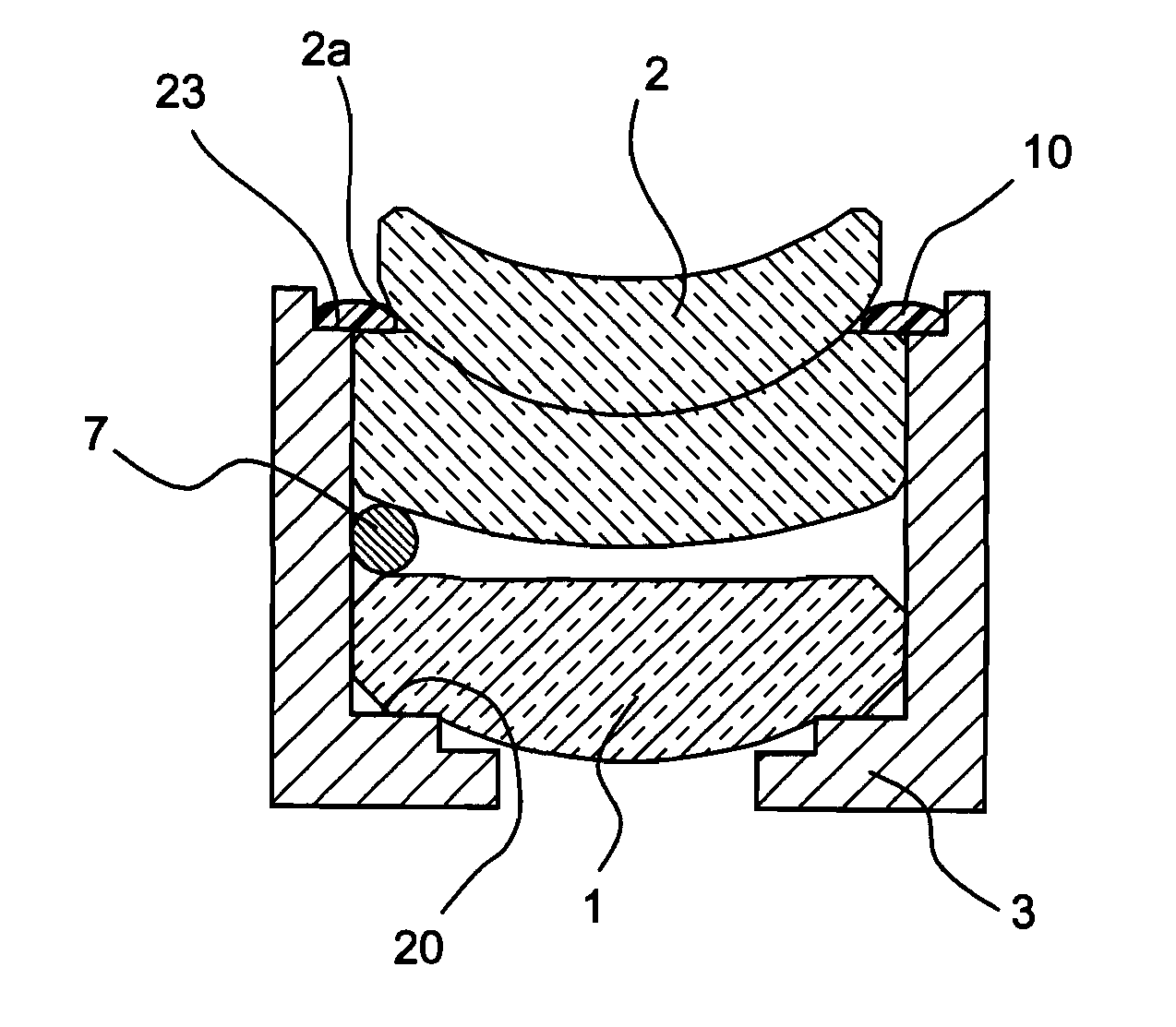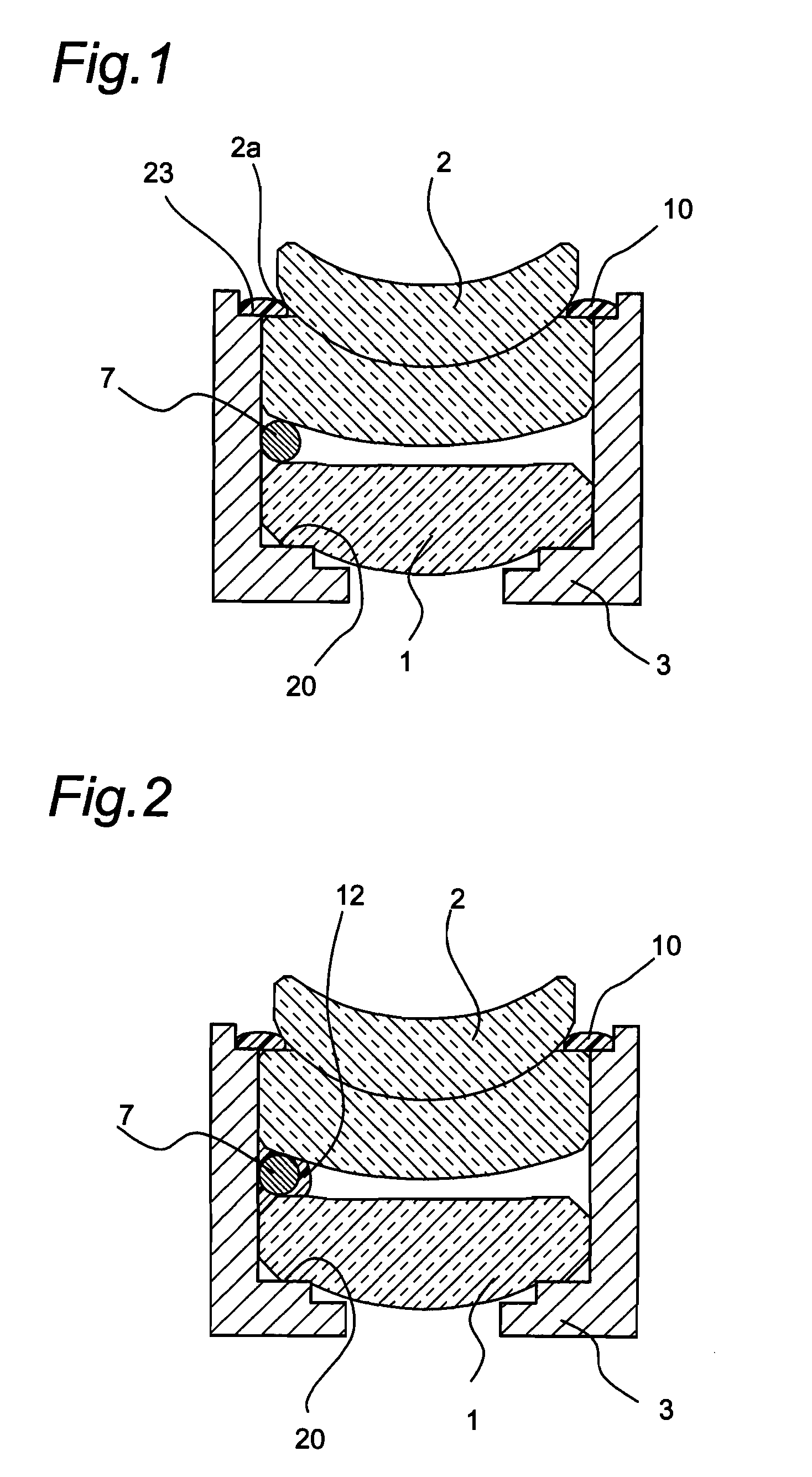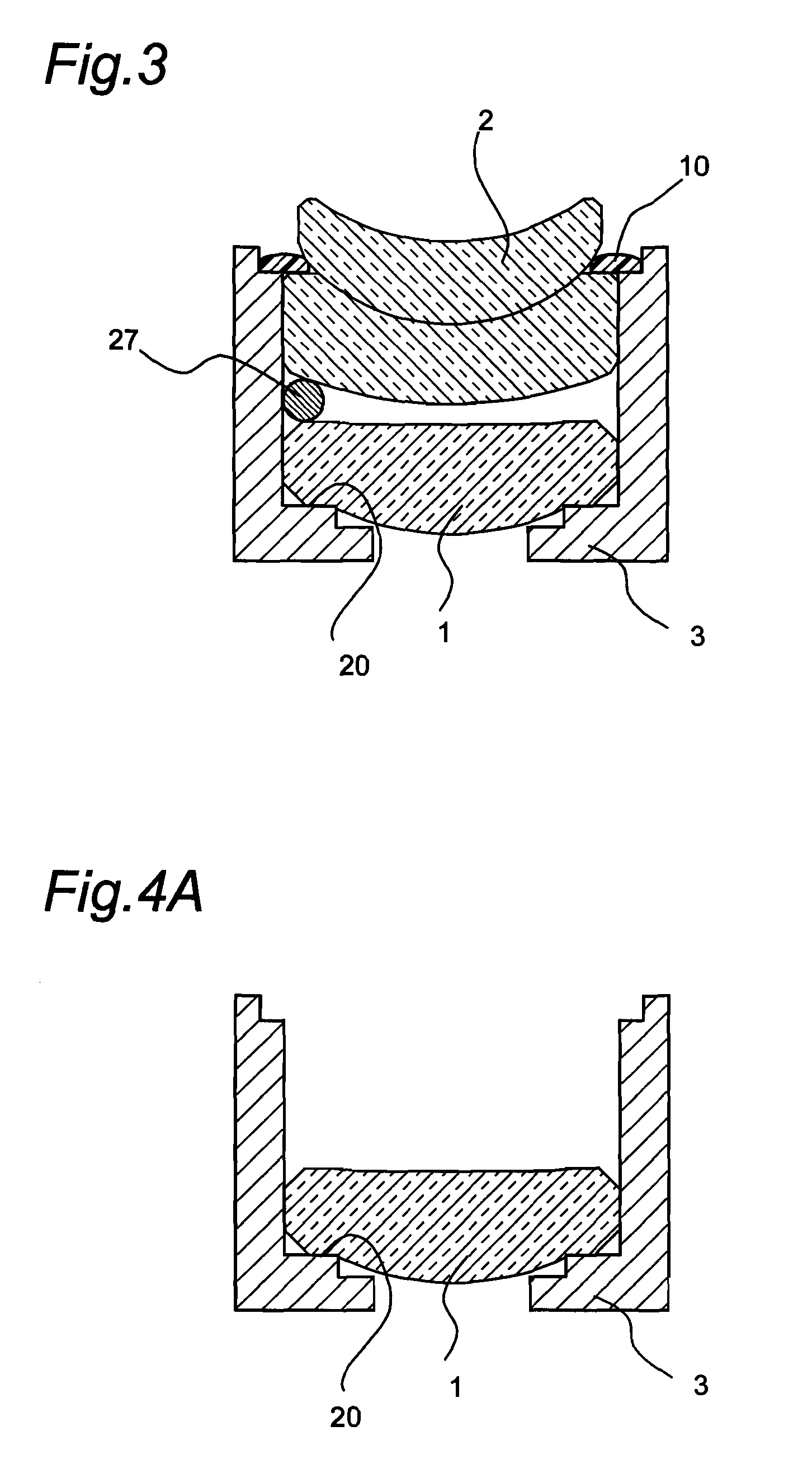Lens tube, method of assembling lens tube, and camera module
a technology of lens tube and lens frame, which is applied in the field of lens tube, can solve the problems of lens frame inclination, increased tube size, and increased manufacturing cost of the tube, and achieve the effect of preventing lens inclination
- Summary
- Abstract
- Description
- Claims
- Application Information
AI Technical Summary
Benefits of technology
Problems solved by technology
Method used
Image
Examples
first embodiment
[0117]FIG. 1 shows a cross section of a lens tube in the first embodiment of the invention.
[0118]The lens tube shown in FIG. 1 is composed of two lenses, first lens and second lens, a tubular lens frame 3 for holding each of the first and second lenses 1, 2, and three spherical spacers 7 which are in contact with the opposite lens surfaces of the first and second lenses 1, 2. In this case, the spacers 7 are present in the state of being in contact with the curved surfaces of the first lens 1 and the second lens 2 and determine a distance between the first and second lenses 1, 2. The first lens 1 is a compound lens made up of two optical devices.
[0119]A step section 20 provided in the vicinity of a lower end side of the inner circumference of the lens frame 3 is in contact with a peripheral section of the lens surface of the first lens 1. The spacers 7 are fixed to the first lens 1 with adhesives 10.
[0120]The second lens 2, which is a compound lens, is formed by joining two meniscus ...
second embodiment
[0131]FIG. 3 shows a cross section of a lens tube in the second embodiment of the invention. The lens tube of the second embodiment is similar in configuration to the lens tube of the first embodiment except for the spacers, and therefore similar component members are designated by similar reference numerals.
[0132]A lens tube shown in FIG. 3 is composed of two lenses, first and second lenses 1, 2, a cylindrical lens frame 3 for holding the first and second lenses 1, 2 with their optical axes aligned with each other, and three spherical spacers 27 which are in contact with the opposite lens surfaces of the first and second lenses 1, 2 and with the inner wall of the lens frame 3. In this case, the spacers 27, which include ferromagnetic materials or ferrimagnetic materials, are present in the state of being in contact with the curved surfaces of the first lens 1 and the second lens 2 and determine a distance between the first and second lenses 1, 2.
[0133]As the ferromagnetic materials...
third embodiment
[0168]FIG. 8 shows a cross section of a lens tube in the third embodiment of the invention. The lens tube of the third embodiment is similar in configuration to the lens tube of the second embodiment except that the spacers are fixed to the lens with adhesives, and therefore similar component members are designated by similar reference numerals.
[0169]A lens tube shown in FIG. 8 is composed of two lenses, first and second lenses 1, 2, a cylindrical lens frame 3 for holding the first and second lenses 1, 2 with their optical axes aligned with each other, and three spherical spacers 27 which come into contact with the opposite lens surfaces of the first and second lenses 1, 2 and with the inner wall of the lens frame 3. The spacers 27 include ferromagnetic materials or ferrimagnetic materials and are fixed to the lens surface of the first lens 1 with adhesives 10.
[0170]Description is now given of the procedures in the method of assembling the lens tube shown in the third embodiment wit...
PUM
| Property | Measurement | Unit |
|---|---|---|
| distance | aaaaa | aaaaa |
| mass | aaaaa | aaaaa |
| inner diameter | aaaaa | aaaaa |
Abstract
Description
Claims
Application Information
 Login to View More
Login to View More - R&D
- Intellectual Property
- Life Sciences
- Materials
- Tech Scout
- Unparalleled Data Quality
- Higher Quality Content
- 60% Fewer Hallucinations
Browse by: Latest US Patents, China's latest patents, Technical Efficacy Thesaurus, Application Domain, Technology Topic, Popular Technical Reports.
© 2025 PatSnap. All rights reserved.Legal|Privacy policy|Modern Slavery Act Transparency Statement|Sitemap|About US| Contact US: help@patsnap.com



